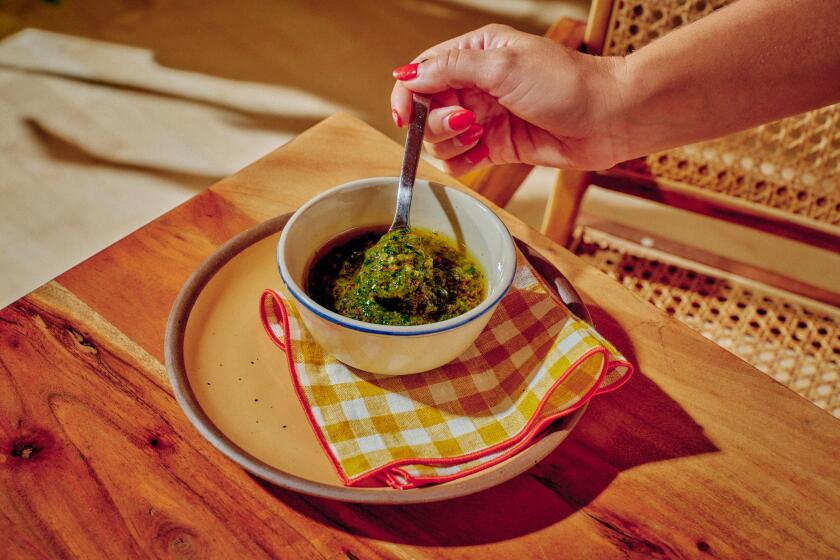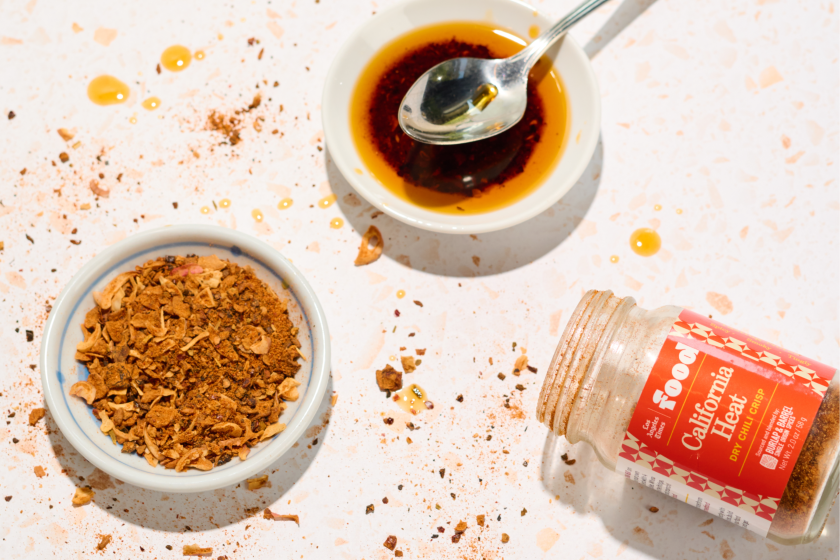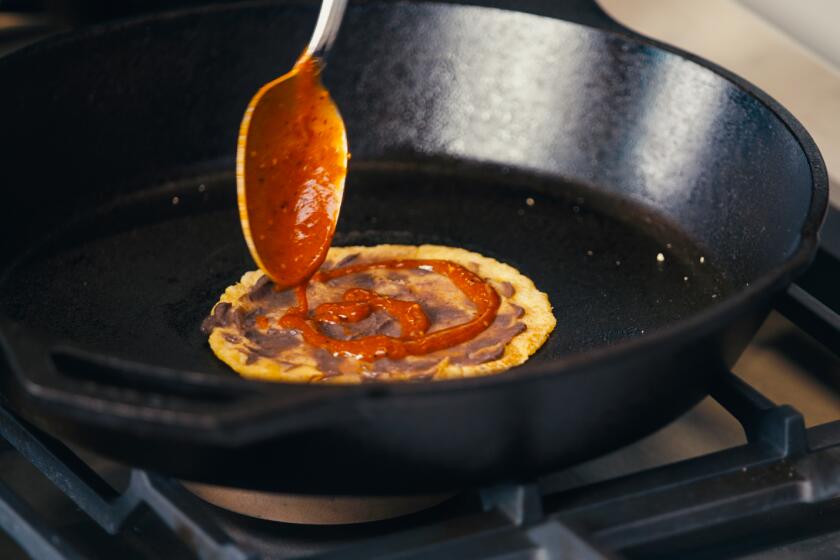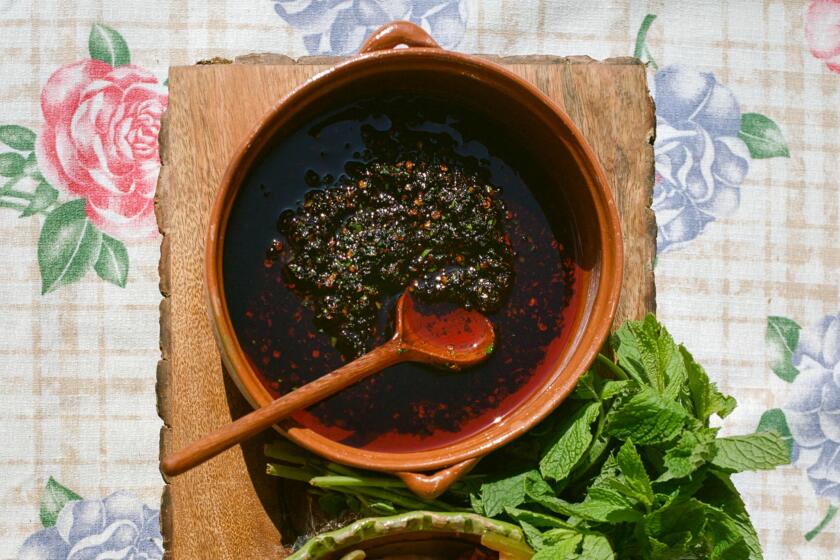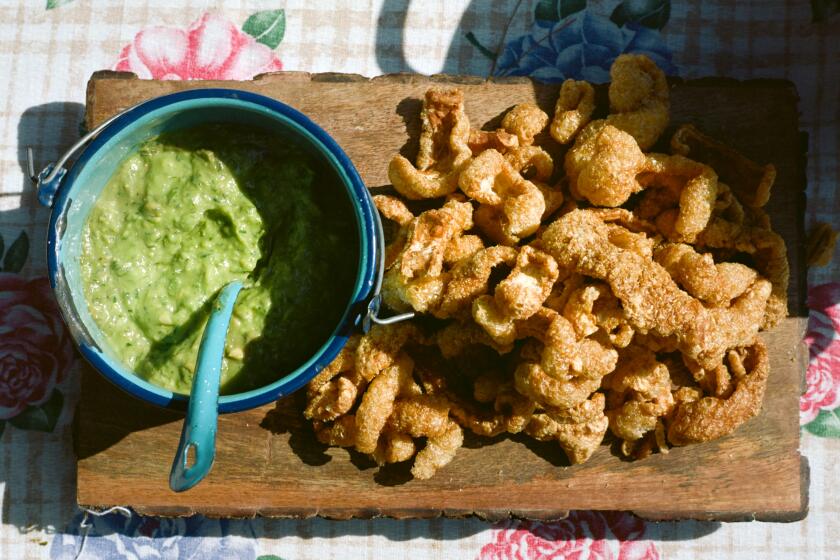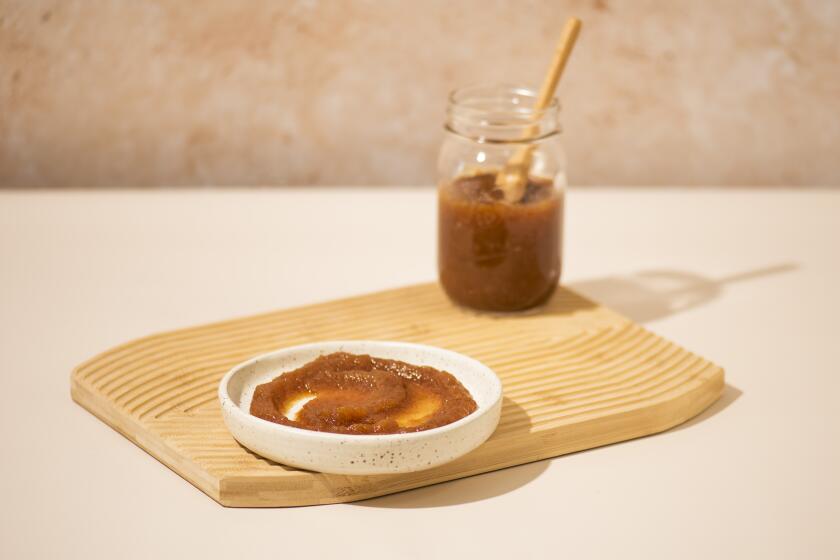Blood orange marmalade
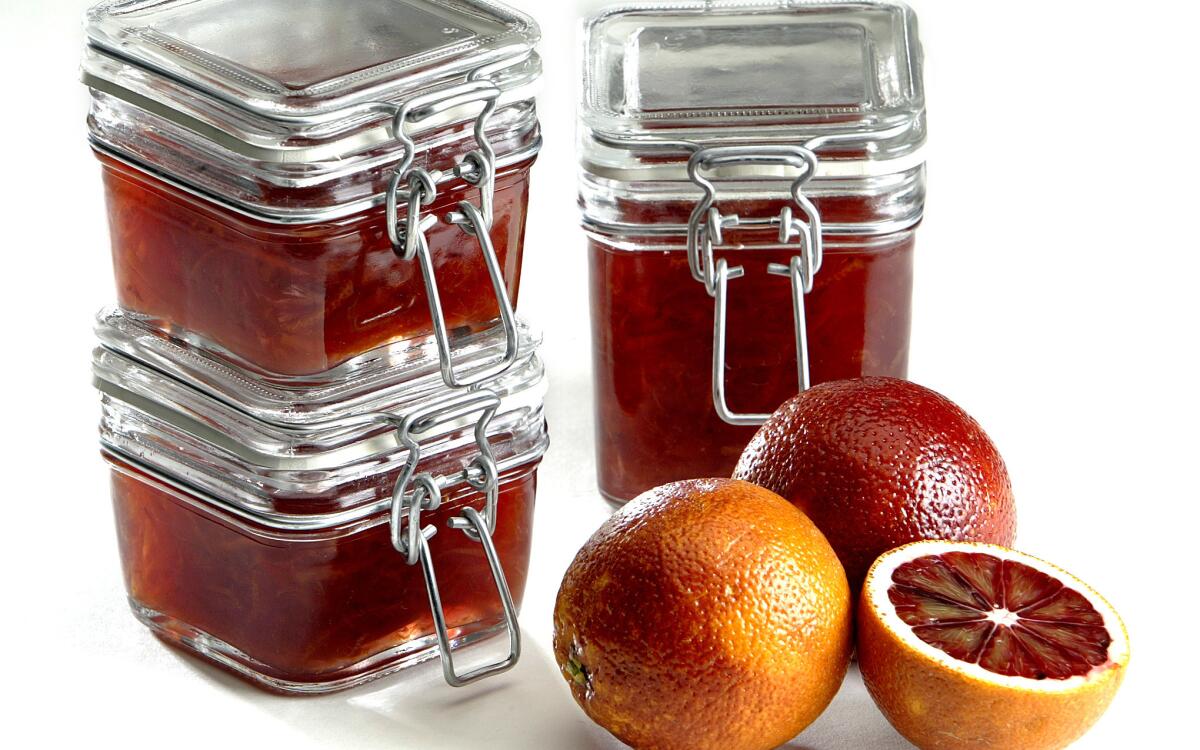
We had just spent several days in a small village in the Tunisian desert, where camels outnumbered cars. Traveling in an ancient Volkswagen bug, my husband and I, college students down to our last few dinars, headed to Tunis, where we planned to catch the car ferry to Sicily a few days later, and then drive on to Rome, where we’d sell the VW, thus funding our return to the U.S.
Driving across North Africa, we’d subsisted on cheaper-than-cheap, super-spicy and filling macaroni dishes sold in one-table cafes in the countryside. In the big city of Tunis, our culinary options immediately multiplied. Street-market fare was plentiful and we gloried in the local version of baguette sandwiches: French rolls filled with tuna and sliced olives.
And there, in the market in the medina, we first saw -- and then gleefully devoured -- juicy, glowing-red blood oranges, the sultans of citrus.
On each red-streaked pyramid of oranges, the seller would place several oranges that had been sliced in half so customers like us would be drawn to the arresting sight of the contrasting colors of the red flesh framed in the bright golden halo of the rind.
Over the next few days as we waited for space on a departing ferry, we’d buy our blood oranges one or two at a time, peeling and eating the sweet fruit as we strolled around the seaport city, enjoying every flavorful bite as a you-can’t-get-this-at-home luxury.
But now you can -- at your local farmers market and specialty grocery stores. Blood oranges, which are thought to have originated in Sicily, are best cultivated in areas where there’s a contrast between day and nighttime temperatures -- Italy, Spain, Algeria, Morocco, Tunisia and, more recently, California. They’re less acidic than other kinds of oranges, with a pronounced sweetness, even in the skin. You’ll detect berrylike notes in the flavor.
In the Mediterranean, they’re considered the best dessert orange; they’re served peeled and sectioned with dates and other sweetmeats. In Sicily, they’re served in salads. Blood oranges are considered too expensive to be grown for juice commercially, but in homes or small restaurants, their beautiful red juice is prized for its sweetness.
More recently, chefs around the world have used blood oranges in desserts and other dishes. Alice Waters, for example, does a salad of red and golden beets, blood oranges, walnuts and endive. Mario Batali combines shaved fennel, blood oranges, pomegranate and pecorino. In London, one of Gordon Ramsay’s desserts is fresh blood orange set in its own jelly with orange-flower ice cream.
The season for California blood oranges is roughly January through April or May. Smaller than navel oranges, with red-blushed or streaked rinds, they’re usually seedless.
As tempting as it might be to simply enjoy them out of hand, their unique characteristics are well served in certain recipes.
Rich, wine-colored marmalade is a wonderful way to preserve the sunset colors of rind and flesh. Because blood orange rinds lack the usual citrus bitterness (of the Seville orange, for example, which is used for commercial marmalade production), you don’t have to blanch the peels as you do when making other marmalade -- cutting down your prep time considerably. Times Test Kitchen Director Donna Deane’s recipe calls for less sugar than would be used in other citrus marmalades too, because of the blood orange’s sweeter flavor.
Start a day ahead; as with most marmalades, this one requires overnight standing. But it’s a small-batch recipe and doesn’t require canning supplies or hot water bath processing: Just refrigerate your two jars after making.
If you don’t have a candy thermometer, you can test to see whether the marmalade is at the jelling point by using the chilled-plate test. Place a few small plates in the freezer when you start to cook the jam. To test for doneness, put a scant half-teaspoon of marmalade on the chilled plate, and tilt the plate to let it run and cool a bit. Push the cooling marmalade with your finger to see how it’s setting up: If it holds its shape, it will jell nicely after cooling.
Our arugula with blood orange vinaigrette salad is simplicity itself in terms of preparation, but it wows with just the right balance of contrasting flavors: peppery arugula, earthy Marcona almonds and sweet, bright citrus. And you’ll never serve a prettier mid-winter dish.
More delicate and nuanced than so many sangrias that hit you over the head with fruit-punch flavors, our blood orange sangria combines the rosy fresh-squeezed juice with white Spanish wine (a Rueda would be perfect), Cinzano Bianco and, again, less sugar than other recipes might call for. The blood orange juice’s natural sweetness makes it a delicious mixer, and using white wine rather than red allows the color to shine and the lighter flavors to come through.
But once we’d squeezed a pitcher of this beguiling juice we couldn’t stop mixing drinks. That’s how we concocted a cocktail -- call it the Blood Orange Blossom -- that, if served just as the too-early winter darkness falls, brightens the evening like a lingering sunset.
Of course, if we’d discovered them back in Tunisia, we might never have made it home.
Wash the oranges. Remove the outer peel with a vegetable peeler and cut it into thin slivers. You should have about 1 1/2 cups sliced peel.
Cut away the white pith from the outside of the oranges. Cut the oranges into quarters, remove any inner pith and seeds, then cut into half-inch pieces. You should have about 2 cups cut-up oranges.
Combine the slivered orange peel, orange pulp and water in a 4-quart saucepan and bring to a boil. Reduce the heat and simmer 5 minutes. Cover and refrigerate 12 to 18 hours.
Measure fruit and liquid and add three-fourths cup sugar for each cup of fruit mixture. Stir well to combine.
Bring the mixture to a simmer and cook over medium heat to the jelly point (220 degrees), about 35 to 45 minutes. (Or test by placing a small amount on a chilled plate to see how it will set upon cooling.) If the marmalade seems to be simmering too hard, reduce the heat to medium low. Stir occasionally to prevent sticking.
Remove the marmalade from the heat and skim off any foam. Ladle into clean jelly jars, filling to one-half inch from the top. Wipe the rims and seal. Cool, then refrigerate.
Get our Cooking newsletter.
Your roundup of inspiring recipes and kitchen tricks.
You may occasionally receive promotional content from the Los Angeles Times.










